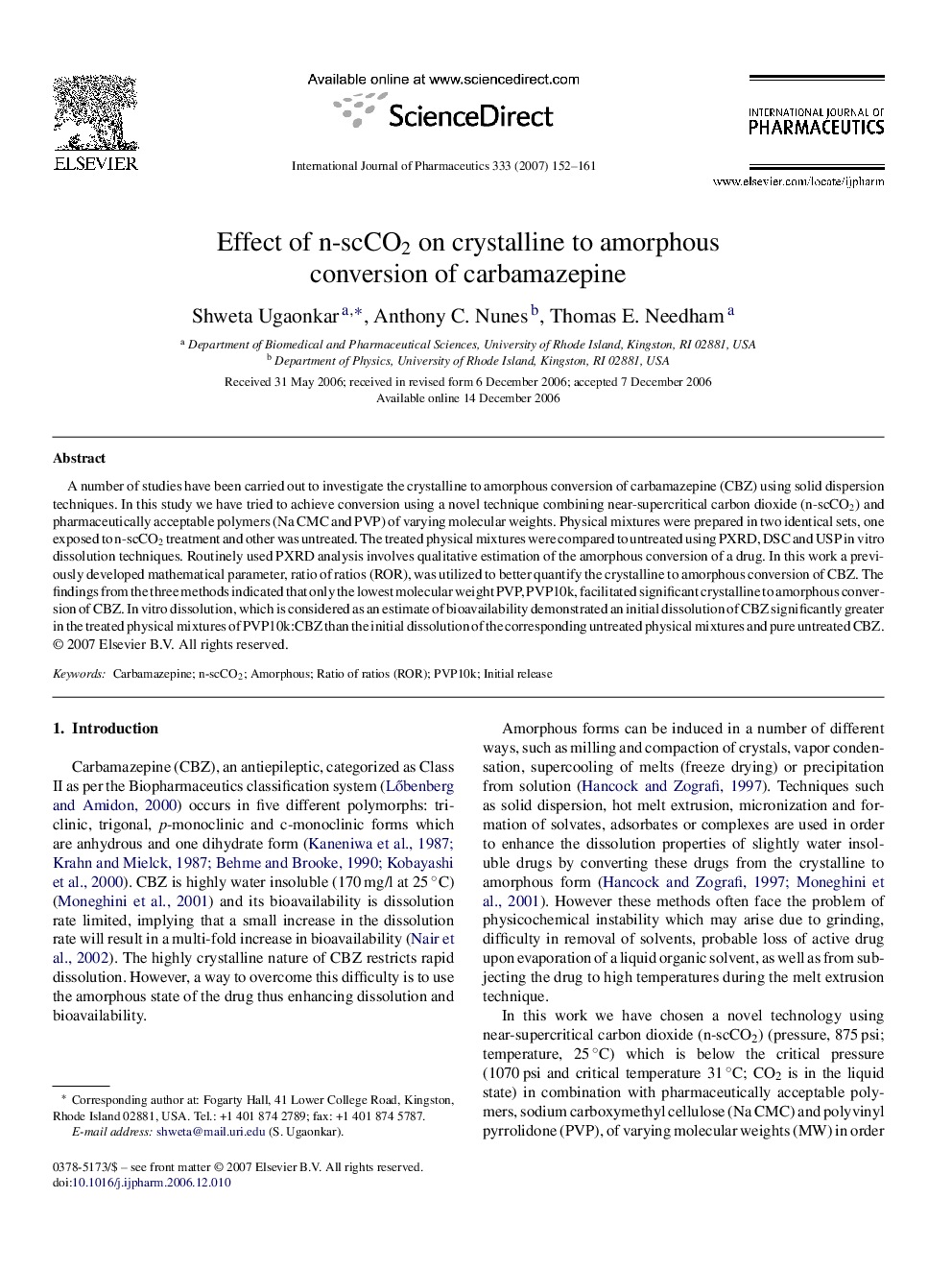| Article ID | Journal | Published Year | Pages | File Type |
|---|---|---|---|---|
| 2506434 | International Journal of Pharmaceutics | 2007 | 10 Pages |
A number of studies have been carried out to investigate the crystalline to amorphous conversion of carbamazepine (CBZ) using solid dispersion techniques. In this study we have tried to achieve conversion using a novel technique combining near-supercritical carbon dioxide (n-scCO2) and pharmaceutically acceptable polymers (Na CMC and PVP) of varying molecular weights. Physical mixtures were prepared in two identical sets, one exposed to n-scCO2 treatment and other was untreated. The treated physical mixtures were compared to untreated using PXRD, DSC and USP in vitro dissolution techniques. Routinely used PXRD analysis involves qualitative estimation of the amorphous conversion of a drug. In this work a previously developed mathematical parameter, ratio of ratios (ROR), was utilized to better quantify the crystalline to amorphous conversion of CBZ. The findings from the three methods indicated that only the lowest molecular weight PVP, PVP10k, facilitated significant crystalline to amorphous conversion of CBZ. In vitro dissolution, which is considered as an estimate of bioavailability demonstrated an initial dissolution of CBZ significantly greater in the treated physical mixtures of PVP10k:CBZ than the initial dissolution of the corresponding untreated physical mixtures and pure untreated CBZ.
